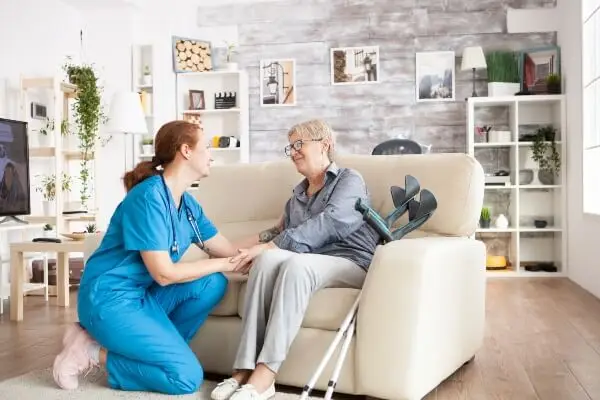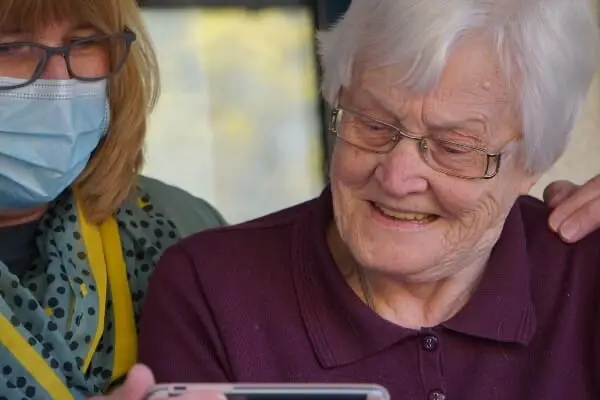6 Typical Hazards in a Care Setting – How You Can Keep People Safe
Image by DCStudio on Freepik
When safeguarding those in your care, mitigating risks is crucial. Unfortunately, dangers are always present, although, with adequate awareness and training, we can lower the chance of it affecting care residents, visitors and staff.
The best way to start this is to understand the most common risks. This expert guide will identify 6 typical hazards in a care setting, explain how they may occur and identify solutions. It also covers relevant legislation and a risk-based approach to safety.
6 Typical Hazards
In a care setting, you should identify and tackle any dangers as part of your risk assessment. To get started, here are 6 of the most common hazards you may have to deal with daily to protect your staff and residents.
1. Food Handling
Whenever you handle uncooked food, there is a threat of food poisoning and infection. Without thorough care, you may store or prepare food incorrectly and place those eating it at risk.
To upgrade your food hygiene, start with the 4 Cs of food safety. These principles are the foundation of food handling, and understanding them helps you create repeatable processes that protect diners.
Then you should be aware of the 1990 Food Safety Act and your business’s responsibilities as dictated by it. It was introduced to protect consumers.
2. Fire Safety
As with any environment, fire safety measures in care are both paramount and required by law. Moreover, fire risks are amplified, as residents may need further assistance.
You need appointed fire marshals, plenty of adequate equipment and robust procedures to help residents, staff and visitors exit your building. A register is essential. All staff and visitors should sign in and out when they arrive and leave. That way, you know who is in the building when a fire alarm occurs and can check that everyone exits safely.
3. Hot Surfaces and Water
Burns are a horrible hazard in a care setting. If an elderly person falls on a hot surface and cannot move away, they can suffer significantly. Many people burn themselves when they do not expect something to be hot. Therefore, clear warning signs are a must.
Additionally, hot water and drinks can easily scald. This risk increases if conditions such as Parkinson’s Disease cause tremors or their mobility is restricted.
To prevent scalding, you should take special care with hot water. Install thermostatic mixing valves that blend hot and cold water to a safe temperature and automatically close if a problem arises. Plus, staff should always help vulnerable people with hot water.
4. Inadequate Training
Fail to prepare, prepare to fail. Without the necessary education and training, your staff will lack the knowledge to not only react to hazards and incidents but also prevent them from occurring in the first place. A great starting point is the six Cs of safeguarding or an online care certificate.
Another critical aspect of training is adapting to organisational and procedure changes. Whenever these developments occur, you should retrain staff in the new processes and, if necessary, demonstrate them to your residents.
5. Slips and Falls
Due to their restricted mobility, slips and falls are amongst the most common hazards affecting those in care. Staff cannot be present to help residents all the time, so you must create a safe environment to move within.
If your building has multiple obstacles, such as furniture, trailing wires or wet floors, residents and staff could be at risk. Vigilance is essential; tidy any mess immediately and maintain clear, wide walkways throughout the building, especially in high-traffic areas.
You should also be aware of improper use or standards of furniture, as people can easily slip off an unstable chair or bed. Mobility or reaction impairments increase this risk, so you should regularly check, repair and replace your furniture.
6. Infection Control
Illnesses can spread quickly in the close social quarters of a care setting. Typically, those in care have weaker immune systems, making protecting them vital to their standard of living.
Two things are vital: firstly, infection prevention. It is always better to prevent than react. Clean thoroughly to maintain proper hygiene standards.
Secondly, you must control infections. If one of your residents or staff becomes ill, you must prevent the spread of the sickness. Adequate PPE should be available, and vulnerable residents must be shielded from sick people.
Crucial Legislation Applicable to Care Home Hazards
The UK government has multiple pieces of legislation to protect those in care. Sponsored by the Department of Health and Social Care, the Care Quality Commission regulates care homes in England and performs regular audits to monitor conditions. They use a four-point system to rank the quality of care, ranging from outstanding to inadequate.
If you manage a care environment, you should be aware of the following legislation and its implications. You have a duty of care to your residents and staff, and these regulations outline your responsibilities:
- Health and Safety at Work Act 1974
- The Electricity at Work Regulations 1989
- Food Safety Act 1990
- The Manual Handling Operations Regulations 1992
- The Lifting Operations and Lifting Equipment Regulations (LOLER) 1998
- The Management of Health and Safety at Work Regulations 1999
- Control of Substance Hazardous to Health (COSHH) Regulations 2002
- The Provision and Use of Work Equipment Regulations (PUWER) 2002
- The Regulatory Reform (Fire Safety) Order 2005
- The Reporting of Injuries, Diseases and Dangerous Occurrences Regulations 2013 (RIDDOR)
Taking a Risk-Based Approach to Safety and Reduce Hazards
When discussing hazards, we need to account for risk levels. Every risk level differs, depending on the hazard and whom it affects.
Risk assessments are your first line of defence when combating these typical hazards in a care setting. They identify potential dangers, their risk level and solutions to mitigate them and also assign a person responsible for monitoring each risk.
You should conduct a risk assessment annually or whenever your systems change. Once completed, update your processes and train staff accordingly to ensure your residents’ safety.
As a general rule, everyone should stay aware of risks within a care setting, including residents and visitors. By spotting potential hazards as they arise, you can quickly eliminate them. Warning signs are a great reminder, highlighting the risks in a particular area and showing people know what to look for.
Learn How to Mitigate Hazards Today
If you want to prevent these 6 typical hazards in care homes from affecting your residents and staff, then Caredemy can help. With hundreds of health and social care courses, including those covering safeguarding, fire safety, food hygiene, first aid and health and safety, you can learn how to mitigate risks and protect people.
Our courses are CQC accredited and can be taken individually or in groups, making them ideal for team training sessions. Or, if you are looking to upgrade your career, we have specialist care certificates and qualifications available.
Sign up online today or contact our friendly team and discuss your options. We will find the perfect course for you.






